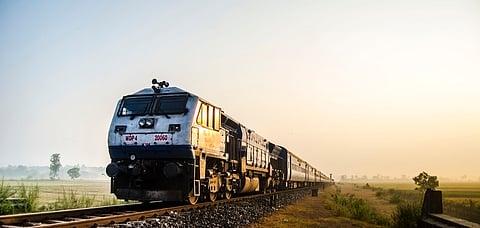
- Destinations
- Experiences
- Stay
- What's new
- Celebrating People
- Responsible Tourism
- CampaignsCampaigns
- Subscribe
- Buy Now

The Indian Railways is set to enhance travel experiences with three new rail line projects, making visiting some of the country’s most revered religious destinations significantly easier. Whether planning a pilgrimage to Nashik’s Trimbakeshwar, Khandwa’s Omkareshwar, or Varanasi’s iconic Kashi Vishwanath, these upcoming routes offer smoother journeys and better connectivity.
According to reports, the initiative includes:
Jalgaon–Manmad Fourth Line: Covering 160 km in Maharashtra.
Bhusaval–Khandwa Third and Fourth Lines: 131 km across Maharashtra and Madhya Pradesh.
Prayagraj–Manikpur Third Line: Stretching 84 km in Uttar Pradesh.
The new infrastructure covers 375 km and is expected to reshape travel and logistics across seven districts.
For spiritual travellers, this means hassle-free access to major jyotirlinga sites like Trimbakeshwar, Omkareshwar, and Kashi Vishwanath. The improved connectivity extends to popular religious destinations like Prayagraj, Chitrakoot, Gaya, and Shirdi. Moreover, the additional infrastructure will enable more passenger trains on the Mumbai–Prayagraj–Varanasi route, reducing travel time and decongesting this busy corridor.
It’s not just about pilgrimage. The new rail lines will open seamless access to UNESCO World Heritage Sites such as the Ajanta and Ellora Caves in Maharashtra and Khajuraho in Madhya Pradesh. Travellers will also find exploring historic landmarks like Devagiri Fort, Asirgarh Fort, and Rewa Fort easier. Nature enthusiasts can look forward to visiting the Yawal Wildlife Sanctuary and marvelling at the stunning Keoti and Purwa Waterfalls.
The benefits of these projects extend beyond tourism. The new rail lines will play a key role in boosting the economy of the regions they pass through by facilitating the transport of essential goods like agricultural products, fertilisers, coal, steel, cement, and containers.
With a reach of 1,300 villages and a population of over 38 lakh across Maharashtra, Madhya Pradesh, and Uttar Pradesh, these developments are set to improve connectivity and quality of life for millions.
By blending spiritual tourism, and economic goals, these new rail lines represent a significant step in modernising India’s transportation network. For pilgrims, tourists, and businesses alike, the future of travel across these regions is set to be more convenient, scenic, and impactful.
(With inputs from multiple reports)
